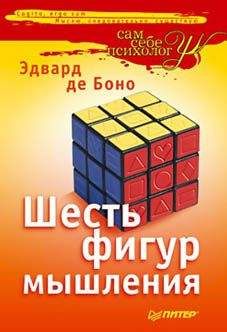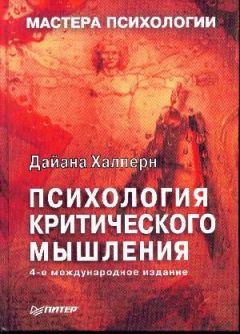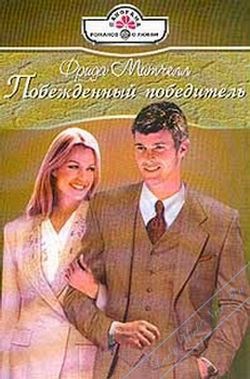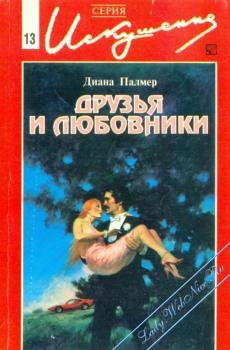Дайана Халперн - Психология критического мышления
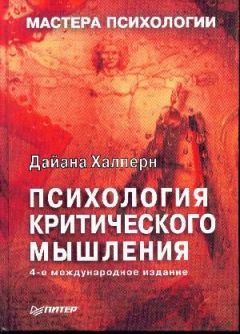
Помощь проекту
Психология критического мышления читать книгу онлайн
Bransford J. D., Stein B. S. (1993). The ideal problem solver: A guide for improving thinking, learning, and creativity (2nd ed.). New York: Freeman.
Brehm J. W. (1956). Postdecision changes in the desirability of alternatives. Journal of Abnormal and Social Psychology, 52, 384-389.
Brennan J. (1993b. May 20). Why polls can be poles apart. The Los Angeles Times, p. A5.
Brim 0. G., Jr. (1966). High and low self-estimates of intelligence. In 0. G.
Brim Jr., R. S. Crutchfield, W. H. Holtzman (Eds.), Intelligence: Perspectives 1965. New York: Har-court, Brace amp; World.
Brody J. E. (1988, March 30). Unresolved relationship: Breast cancer, dietary fat. San Francisco Chronicle, pp. 2-3.
Brooks L W., Simutis Z. M., O'Neil H. F., Jr. (1985). The role of individual differences in learning strategies research. In R. F. Dillon (Ed.l, Individual differences in cognition (Vol. 2, pp. 219-251). New York: Academic Press.
Bross I. D. J. (1973). Languages in cancer research. In G. F. Murphy, D. Pressman, amp; E. A. Mirand (Eds.), Perspectives in cancer research and treatment (pp. 213-221), New York: Alan R. Liss.
Brown R. (1958). Words and things. New York: The Free Press.
Brown A. L., Campione J. C. (1990). Communities of learning and thinking or a context by any other name. In D. Kuhn (Ed.), Developmental perspectives on teaching and learning thinking skills. Contributions to human development (Vol. 21, pp. 108-126). Basel Switzerland: Karger.
Brown S., Walter M. (1993). Problem posing: Reflections and applications. Hillsdale, NJ: Lawrence Erlbaum Associates.
Bruer J. T. (1993). Schools for thought. Cambridge, MA: MTT Press.
Brunei J. S. (1957). On going beyond the information given. In Contemporary approaches to cognition (pp. 41-69). Cambridge, MA: Harvard University Press.
Bruner J. S.t Goodnow J. J., Austin G. A. (1956). A study of thinking. New York: Wiley.
Bugllosi V. (1978). Till death do us part. New York: Bantam Books.
Burke D. M., MacKay D. G., Worthley J. S., amp; Wade E. (1991). On the tip of the tongue: What causes word finding failures in young and older adults? Journal of Memory and Language, 30, 542-579.
Byrne R. (1988). One thousand nine hundred eleven best things anybody ever said. New York: Fawcett.
CampbellS. K. (1974). Flaws and fallacies in statistical
thinking. Englewood Cliffs, NJ: Prentice.Hall. Carey J., Foltz K., Allan /?. A. (1983, February 7). The
mind of the machine. Newsweek. Carkhuff R. R. (1973). The art of problem solving. Amherst, MA: Human Resource Development Press. Carlson E. (1995). Evaluating the credibility of sources: A missing link in the teaching of critical thinking. In D. F. Halpern amp; S. G. Nummedal (Eds.), Psychologists teach critical thinking[Special issue). Teaching of Psychology, 22, 39-41. Carpenter E. J. (1981). Piagetian interviews of college students. In R. G. Fuller et al. (Eds.), Piagetian programs in higher education (pp. 15-22). Lincoln: University of Nebraska Press. Carroll D. W. (1986). Psychology of language. Belmont, CA: Brooks/Cole.
Carroll L. (1971). Through the looking glass. London: Oxford University Press. (Original work published 1872)
Cassel J. F., Congleton R. I. (1993). Critical thinking: An annotated bibliography. Metuchen, NJ: Scarecrow Press.
Ceci S. J., Ruiz A. I. (1993). Inserting context into our thinking about thinking: Implications for a theory of everyday intelligent behavior. In M. Rabinowitz (Ed.). Cognitive science foundations of instruction (pp. 173-188). Hillsdale, NJ: Lawrence Erlbaum Associates.
Ceraso J., Protivera A. (1971). Sources of error in syllogistic reasoning. Cognitive Psychology, 2, 400-416.
Champagne A. B. (1992). Cognitive research on thinking in academic science and mathematics: Implications for practice and policy. In D. F. Halpern (Ed.), Enhancing thinking skills in the sciences and mathematics (pp. 117-134). Hillsdale, NJ: Lawrence Erlbaum Associates. Chance P. (1986). Thinking in the classroom: A survey
of programs. New York: Teachers College Press. Chang J. (1993). Wild swans: Three daughters of China. New York: HarperCollins.
' Chapman L. J., Chapman J. P. (1959). Atmosphere effect reexamined. Journal of Experimental Psychology, 58, 220-226.
Chapman L. /., Chapman J. P. (1967). The genesis of popular but erroneous psychodiagnostic observations. Journal of Abnormal Psychology, 72, 193-204. Chapman L. J., Chapman J. F. (1969). Illusory correlation as an obstacle to the use of valid psychodiagnostic signs. Journal of Abnormal Psychology, 74, 271-280.
Cheng P. W., Holyoak K. J. (1985). Pragmatic reasoning schemas. Cognitive Psychology, 17, 391-416. Chester P. (1972). Women and madness. New York:
Doubleday.
ChiM. T. H., GlaserR., Farr. M. J. (Eds.). (1988). The nature of expertise. Hillsdale, NJ: Lawrence Erlbaum Associates.
Cialdini R. В. (1993). Influence: Science and practice (3rd ed.). Glenview, IL: Scott, Foresman.
Clark H. H., Clark E. V. (1977). Psychology and language: An introduction to psycholinguistics. New York: Harcourt Brace.
Clark H. H., Haviland S. E. (1977). Comprehension and the given-new contract. In R. 0. Freedle (Ed.), Discourse production and comprehension. Norwood, NJ: Ablex.
Clarkson-Smith L., Halpern D. F. (1983). Can age related deficits in spatial memory be attenuated through the use of verbal coding? Experimental Aging Research, 9, 179-184.
Clinton's message to USA's students: Learn to earn. (1994. February 24). USA Today International Edition, p.6A.
The Cognition and Technology Group at Vanderbilt (1993). Toward integrated curricula: Possibilities from anchored instruction. In M. Rabinowitz (Ed.), Cognitive science foundations of instruction (pp. 33-56). Hillsdale, NJ: Lawrence Erlbaum Associates. Cohen G. (1989). Memory in the real world. Hillsdale,
NJ: Lawrence Erlbaum Associates. Collins A. F., Gathercole S. E., Conway M. A., Morris P. E. (Eds.). (1993). Theories of memory. Hillsdale, NJ: Lawrence Erlbaum Associates. Collins C, Mangieri J. N. (Eds.). (1992). Teaching thinking: An agenda for the 21st century. Hillsdale, NJ: Lawrence Erlbaum Associates. Copi I. M. (1986). Informal logic. New York; Macmillan.
Cordes C. (1983, April). Search goes on for «best» ways to learn science. American Psychological Association Monitor, pp. 7-8.
Coughlin E. K. (1993, November 10). When people make up their minds, psychologist says, they often do not really make up their minds at all. The Chronicle of Higher Education, pp. A9, A15. Covington M. V. (1987). Instruction in problem solving and planning. In S. L. Friedman, E. K. Scholnick amp; R. R. Cocking (Eds.), Blueprints for thinking: The role of planning in cognitive development (pp. 469-511). Cambridge, MA: Cambridge University Press. Covington M. V., Crutchfield R. S., Davies L. В., 01-ton R. M., Jr. (1974). The productive thinking program. Columbus, OH: Charles E. Merrill. Craik F. I. M., Salthouse T. A. (Eds.). (1992). The handbook of aging and cognition. Hillsdale, NJ: Lawrence Erlbaum Associates.
Crovitz H. F. (1970). Calton's walk: Methods for the analysis of thinking, intelligence and creativity. New York: Harper amp; Row.
Crutchfield R. S. (1966). Creative thinking in children: Its teaching and testing. In O. G. Brim, Jr., R. S. Crutchfield amp; W. H. Holtzman (Eds.), Intelligence: Perspectives 1965, The Terman.Otis Memorial Lectures. New York: Harcourt, Brace amp; World. Dahlstrom G. W. (1993). Tests: Small samples, large consequences. American Psychologist, 48(4), 393-399.
Darner Т. E. (1987). Attacking faulty reasoning (2nd ed.). Belmont, CA: Wadsworth.
d'Angelo E. (1971). The teaching of critical thinking. Amsterdam: Gruner.
DavisG.A.,Roweton W. (1968). Using idea checklists with college students: Overcoming resistance. Journal of Psychology, 70, 221-226.
Davis G. A., amp; Scott J. A. (Eds.). (1971). Training creative thinking. New York: Holt, Rinehart amp; Winston.
Dawes R. M. (1979). The robust beauty of improper linear models in decision making. American Psychologist, 34, 571-582.
Dawes R. M. (1988). Rational choice in an uncertain world. New York: Harcourt, Brace, Jovanovich.
Dawes R. M. (1989). Experience and validity of clinical judgment: The illusory correlation. Behavioral Sciences and the Law, 7, 457-467.
Dawes R. M. (1993, June 9). Finding guidelines for tough decisions. The Chronicle of Higher Education, p. A40.
Dawes R. M. (1994). House of cards: Psychology and psychotherapy built on myth. New York: The Free Press.
Day R. S., Rodin G. C, Stoltzfus E. R. (1990, March 31). Alternative representations for medication instructions: Effects on young and old adults. Paper presented at the 3rd Cognitive Aging Conference, Atlanta.
DeBono E. (1967). The use of lateral thinking. London: Ebenezer Bayles and Son, Limited.
DeBono.E. (1968). New think: The use of lateral thinking in the generation of new ideas. New York: Basic Books.
DeBono. E. (1976). Teaching thinking. London: Temple Smith.
DeBono. E. (1977). Information processing and new ideas - lateral and vertical thinking. In S. J. Par-nes R. B. Noller amp; A. M. Biondi (Eds.), Guide to creative action: Revised edition of creative behavior guidebook. New York: Scribner's.
DeBono E. (1991). Teaching thinking. London: Penguin.
DecykB. N. (1994). Using examples to teach concepts. In D. F. Halpern (Ed.) Changing college classrooms: New teaching and learning strategies for an increasingly complex world (pp. 39-63). San Francisco: Jossey-Bass.
deGroot, A. A. (1983). Heuristics, mental programs, and intelligence. In R. Groner M. Groner, amp; W. F. Bis-chof (Eds.), Methods of heuristics (pp. 109-129). Hillsdale, NJ: Lawrence Erlbaum Associates.
deGroot A. D. (1966). Perception and memory versus thought: Some old ideas and recent findings. In B. Kleinmuntz (Ed.), Problem solving: Research, method and theory. New York: Wiley.
De Lopez R. S. (1992, June 16). Promote thinking, say university leaders. The News, Mexico City, p. B4.
Dember W. N., Jenkins J. J., Teyler T. (1984). General psychology (2nd ed.). Hillsdale, NJ: Lawrence Erlbaum Associates.
Derry S., Levin J. /?., Schauble L. (1995). Stimulating statistical thinking through situated simulations. In D. F. Halpern amp; S. G. Nummedal (Eds.), Psychologists teach critical thinking [Special issue]. Teaching of Psychology, 22, 51-57.
Dewey J. (1933). How we think: A restatement of the relation of reflective thinking to the educative process. Boston: Heath.
Doolittle J. H. (1995). Using riddles and interactive computer games to teach problem solving. In D. F. Halpern amp; S. G. Nummedal (Eds.), Psychologists teach critical thinking [Special Issue], Teaching of Psychology, 22, 33-36.
Domer D. (1983). Heuristics and cognition in complex systems. In R. Groner, M. Groner, amp; W. F. Bischof (Eds.), Methods of heuristics (pp. 89-107). Hills-dale, NJ: Lawrence Erlbaum Associates.
Dreman D. (1979). Contrarian investment strategy: The psychology of the stock market success. New York: Random House.
Duncan С. P. (1961). Attempts to influence performance on an insight problem. Psychological Reports, 9, 35-42.
Duncker K. (1945). On problem solving. Psychological Monographs (Whole No. 270).
Eagly A., Chaiken S. (1993). The psychology of attitudes. New York: Harcourt Brace.
Edwards J., amp; Baldauf В., Jr. (1987). The effects of the CORT.l thinking skills program on students. In D. N. Perkins, I. Lockhead, amp; J. Bishop (Eds.), Thinking: The second international conference (pp. 453-473). Hillsdale, NJ: Lawrence Erlbaum Associates.
Ekman P. (1992). Telling lies: Clues to deceit in the marketplace, politics and marriage. New York: Norton.
Evans J. St. В. Т. (1989). Bias m human reasoning. Causes and consequences. Hillsdale, NJ: Lawrence Erlbaum Associates.
Evans J. St. B. T.,Newstead,S.E. (1993). Human reasoning: The psychology of deduction. Hillsdale, NJ: Lawrence Erlbaum Associates.
Eylon В., Linn M. С(1988. Fall). Learning and instruction: An examination of four research perspectives in science education. Review of Educational Research, pp. 251-301.
Facione P. (1991, August). Teaching college-level critical thinking skills. Paper presented at the 11th Annual International Conference on Critical Thinking and Educational Reform, Sonoma, CA.
Ferguson G. (1981). Architecture. In N. L. Smith (Ed.). Metaphors for evolution: Soureces of new methods. Beverly Hills, CA: Sage.
Festinger L. (Ed.). (1964). Conflict, decision and dissonance. Palo Alto, CA: Stanford University Press.
Festinger I., Riecken И. W., Schacter, S. (1956). When prophecy fails. Minneapolis: University of Minnesota Press.

